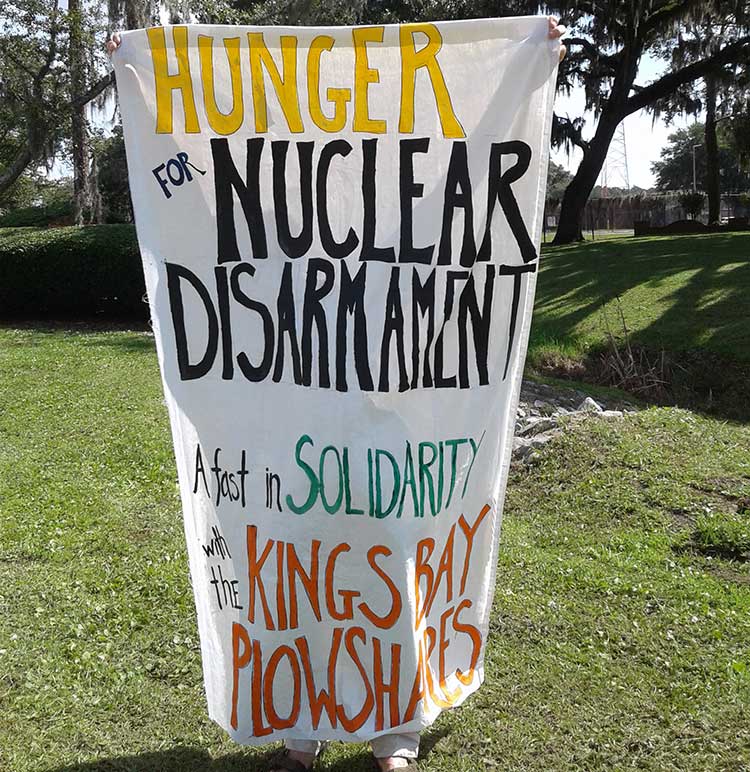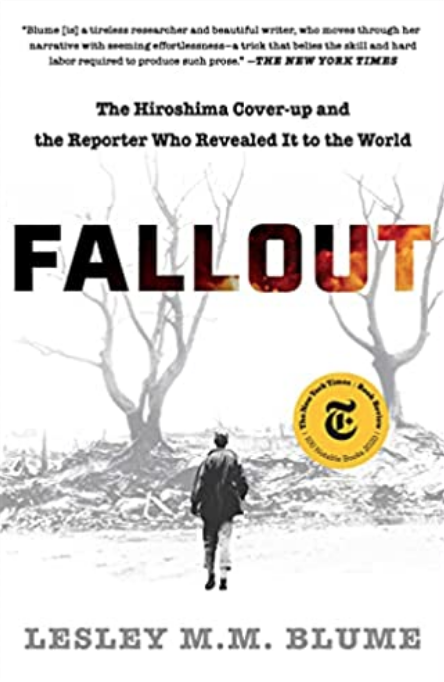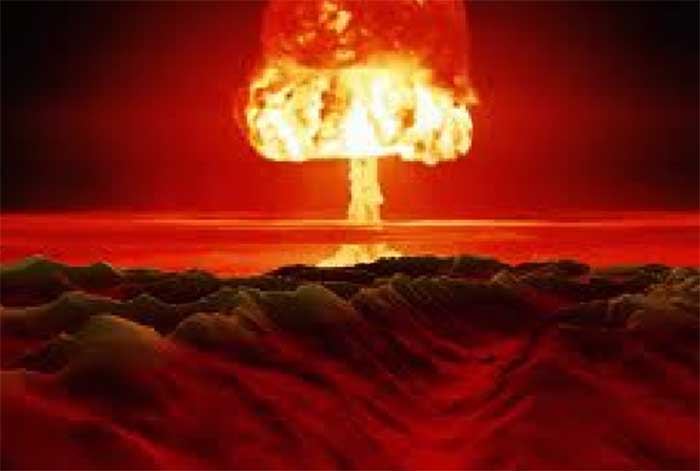
Groton and New London, Connecticut, are home to about 65,000 people, three colleges, the Coast Guard Academy, 15 nuclear-powered, nuclear-armed submarines capable of destroying the world many times over, and General Dynamics’ Electric Boat, a multi-billion-dollar private corporation that offers stock options to its shareholders and mega-salaries to its top executives as it pockets taxpayer dollars and manufactures yet more of those stealthy, potentially world-ending machines. Whew! That was a long sentence!
Naval Submarine Base New London stretches along the east side of the Thames River, straddling the towns of Groton and Ledyard. Occupying at least 680 acres, the base has more than 160 major facilities. The 15 subs based there are the largest contingent in the nation. They’re manufactured just down the river at Electric Boat/General Dynamics, which once built the Polaris and Trident nuclear submarines, employs more than 12,000 people in our region, and is planning to hire another 2,400 this year to meet a striking “demand” for the newest version of such subs.
Some readers might already be asking themselves: Are submarines still a thing? Do we really still put men (and women) far beneath the ocean’s surface in a giant metal tube, ready to launch a nuclear first strike at a moment’s notice? At a time when the greatest threats to human life may be viruses hidden in our own exhales, our infrastructure is crumbling, and so much else is going wrong, are we really spending billions of dollars on submarines?
Yes!
Back in 2010, the Department of Defense’s Nuclear Posture Review called for a “recapitalization of the nation’s sea-based deterrent,” as though we hadn’t been spending anything on submarines previously. To meet that goal, the Obama administration, the Trump administration, and now the Biden administration all agreed that, on a planet already filled with devastating nuclear weapons, the U.S. must begin construction of a new class of 12 Columbia ballistic missile submarines.
The Navy’s 2021 budget submission estimates that the total procurement cost for that 12-ship class of subs will be $109.8 billion. However, even a number that big might prove nothing but rough back-of-the-napkin figuring. After all, according to the Navy’s 2022 request, the cost estimate for the first submarine of the 12 they plan to build, the lead ship in its new program, had already grown from $14.39 billion to $15.03 billion. Now, that may not sound like a lot, but string out all those zeros behind it and you’ll realize that the difference is more than $640 million, just a little less than what Baltimore — a city of more than 600,000 people — will get in federal pandemic relief aid.
Swirling around those submarines are descriptions citing “strategy” and “capability.” But don’t be fooled: they’ll be potential world killers. Each of those 12 new subs will be armed with 16 Trident D-5 submarine-launched ballistic missiles, or SLBMs, which have a range of 4,500 miles and can carry 14 W-76-1 thermonuclear warheads. Each one of those warheads is six times more powerful than the atomic bomb that the U.S. military detonated over Hiroshima on August 6, 1945. Start multiplying 12 times 16 times 14 times 6 and there isn’t enough world to destroy with math like that. After all, the single Hiroshima bomb, “small” as it was, killed an estimated 140,000 people and turned the city into rubble and ash.
The best way to understand the Columbia class submarine, then, is as a $100 billion-plus initiative that aims to deliver 16,128 Hiroshimas.
Submarine Capital of the World
My family and I live in New London and evidence of the military is everywhere here. There’s a cannon planted amid the roses at the entrance to the motel right off the highway near our house. And another in front of the laundromat. Huge American flags flap at the car dealership that offers special financing to Navy personnel.
Signs declaring New London/Groton to be the “Submarine Capital of the World” festoon the highways into town. The huge naval submarine base and the General Dynamics/Electric Boat yards dominate the Groton side of the Thames River. There’s a massive garage for half-built submarines, painted a very seventies shade of green, that chews up most of the scenery on the Groton side of the river, alongside cranes and docks and industrial buildings in various hues of grey. It’s dismal. New London’s waterfront homes and private beaches look out on three generations of military-industrial-complex architecture. We wouldn’t want to live in Groton, but at least they feast their eyes on our quaint downtown and the parks that stretch along our side of the river.
On the New London side, General Dynamics/Electric Boat looks more like a corporate campus than a shipyard. It employs a lot of people, but there are still plenty of New Londoners who work at jobs that have nothing to do with the military or the business of building and designing submarines. Unfortunately, that seems to be changing, because General Dynamics is ramping up its engineering and manufacturing operations in order to build that new fleet of submarines.
Local developers smell money in the air, which means that our downtown is getting a makeover intended to attract the sort of young professionals who will design and oversee the production of those subs. A new development right near New London’s General Dynamics complex is now renting studio apartments for $1,300 a month, even though ours is the fifth poorest city in Connecticut.
Side Bonus? Killer Kitsch
An uproar of protest over our rampant version of local militarism rose to a sustained din in the 1970s and 1980s but has since dulled to a whisper, despite regular protest vigils and demonstrations carried out by a stalwart handful of people. It’s tough to understand since the danger is still so imminent. After all, the symbolic Doomsday Clock of the Bulletin of Atomic Scientists now stands at 100 seconds to nuclear midnight, as close as it’s ever been in its 70 years of existence. Meanwhile, the United States will once again spend staggering sums on its military in fiscal year 2022.
The upside? Our local thrift stops are full of the strange kitsch that comes with military occupation. I drink my morning coffee out of a white mug that commemorates Electric Boat’s 1987 Christmas Blood Drive, emblazoned with a red drop of blood, the company’s logo, and the phrase “I give so that others may live.”
I’m a lifelong pacifist, the child of people who, as protesters, climbed over fences and cut through locks in order to enter U.S. weapons facilities like that naval base at Groton. I spent my childhood at the Pentagon, where, a few times a year, my parents and our friends made elaborate spectacles out of blood and ash and cardboard tombstones, leaving Pentagon workers to walk through the muck and mess, tracking it into the headquarters of the Department of Defense. And yet I’ll confess to you, in the privacy of TomDispatch, that I do have a genuine weakness for military kitsch.
My husband is a lifelong pacifist, too. His parents went to malls to hold “Stop War Toys” demonstrations and entered toy stores to put “this glorifies violence” stickers on G.I. Joe and Rambo dolls. He spent his summers outside Electric Boat in Groton. His family and their friends went to the commissionings and christenings of newly built subs, holding protest signs, blocking the entrances, and trying to leaflet the well-dressed guests coming to those strange ceremonies with oddly Christian baptismal overtones to them. And yet (or do I mean, and so?) he loves military kitsch, too. As a result, whenever we go to our local Goodwill, Salvation Army store, or neighborhood yard sales, we invariably keep a lookout for mugs and beer glasses from our corner of the military-industrial complex.
It’s the ultimate in-joke for us. Such killer kitsch helps us manage our deep discomfort with living in a militarized community.
One made-in-China coffee mug of relatively recent vintage that we own, for instance, has a picture on one side of a submarine and the phrase “Virginia Class: Confronting the Challenge, Driving Out Cost.” The other reads: “Designed for Affordability: General Dynamics, Electric Boat.”
That second mug always makes me snicker because the Virginia Class submarines were built by Electric Boat in New London/Groton in collaboration with Newport News Shipbuilding, part of Huntington Ingalls in Virginia.
Those boats cost a mere $3.45 billion each and that “two-yard strategy” — Connecticut and Virginia — was meant to keep both of those corporate entities from financial disaster. (“Afloat” is the word that comes to mind.) However, it made for an even more expensive product as partially assembled submarines had to be floated laboriously up and down the Eastern seaboard. According to Ronald O’Rourke of the Congressional Research Service, “A primary aim of the arrangement was to minimize the cost of building Virginia-class boats at a relatively low annual rate in two shipyards (rather than entirely in a single shipyard) while preserving key submarine-construction skills at both shipyards.” Not likely, as it turned out. Then again, what weapons-building project doesn’t have staggering cost overruns in twenty-first-century America?
Honestly, can you imagine the federal government contracting with Hershey and Nestle to collaborate on a gigantic new candy bar and then paying extra for it because their workers needed to pass the product back and forth between their factories, hundreds of miles apart? Such thoughts regularly occur to me as I drink my morning coffee out of that hilariously labelled “Designed for Affordability” mug. The anger that follows is like a second jolt of caffeine!
Happy Hour?
Speaking of rage, we drink our happy-hour beers out of glasses commemorating the USS Pittsburgh, SSN 720. That Los Angeles class submarine was commissioned in 1985 and was one of two that launched Tomahawk Cruise missiles at Iraq during 1991’s Gulf War.
The beer glasses make me think of the dingy strip of bars right outside the main gate of the Electric Boat shipyard in Groton. They’re all closed now, but in the 1970s heyday of submarine manufacturing, bars like El Bolero (shortened to The Elbow) and Elfie’s served the shipyard workers and submariners alike. The lunch crowd was thick, the bar full of small glasses of beer, and the workers would drop dollar bills in garbage cans as they filed out and back across the street to work. Those bars estimated then that they made more in their daily lunchtime dollar-bill rushes than other local bars and restaurants made in a week.
At some point, the higher-ups at Electric Boat grew embarrassed by the daily spectacle of drunken workers, beer bottles littering the curbs, regular fender-benders, and the fights that tend to accompany excessive drinking. Their solution? They stopped letting the workers leave for lunch.
As a younger person, I imagined that daytime drinking served to dull the cognitive dissonance of working people who put food on the table for their children by welding the machines that threatened all children anywhere on this planet. As I grow older, however, I wonder if such daytime drinking wasn’t just fun.
The Small No
Another way we manage our discomfort with our local version of the military-industrial complex and what it means for this country and this planet is to be a small but visible “No” amid the ubiquity of militarism in this town, amid all those chubby, cute submarines that adorn our public spaces.
We stand on a bleak street corner near the base for at least an hour once a week to protest the world we find ourselves in. It’s admittedly a small thing, but we do it without fail. Souped-up trucks and fast cars with custom paint jobs rev their engines as they pass, cutting that corner uncomfortably close, while tossing gravel in their wake. The vehicles are mostly driven by clean-cut young men, often in the uniform of the Groton-New London Naval Submarine base. They’re off for an hour of freedom at the newly completed, squeaky-clean Chipotle up the hill or the seedy Mynx Cabaret across the street. If we have staying power, we’ll see the Chipotle crew come tearing back down the hill at the end of that hour.
On one corner is a grimy little liquor store with a big parking lot, the kind of place that should make you question your drinking habits. (If I don’t have a problem, why am I parked here?) On the second corner is an empty lot with the vestiges of a once-thriving car-repair shop. The third has a truck rental company, the signpost of a transitory community. And sure enough, the license plates on the cars streaming into the base hail from Navy-centered communities like ours around the country.
Route 12 is a mini-highway where cars regularly hit 70 miles an hour as they roar up the hill. We’re desperately small and slow by comparison. My mother paces the sidewalk, I stand still, shifting my weight from one foot to the other, while our friend Cal Robertson sits. A Vietnam Veteran, he came back from that long-gone war physically unscathed but deeply disturbed by everything he witnessed and experienced.
Cal holds a sign emblazoned with this question: “What About the Children?” Some cars honk in response. My guess: not so much in support of his message as in recognition of his regular presence over these long decades. My mother and I are interlopers, occasional sign holders counting down the minutes, but Cal — comfortable in a walker than converts to a chair — could do this all day.
My mother holds a simple sign that reads “No Nukes.” For the men in trucks headed out to lunch, I painted on mine: “Meatball Subs, not Nuclear Submarines.” It receives an occasional nod or grin. And in the meantime, in our very community, the place where I’m raising my kids, the military-industrial complex continues to invest in and build vessels meant only for the end of the world.
Follow TomDispatch on Twitter and join us on Facebook. Check out the newest Dispatch Books, John Feffer’s new dystopian novel, Songlands (the final one in his Splinterlands series), Beverly Gologorsky’s novel Every Body Has a Story, and Tom Engelhardt’s A Nation Unmade by War, as well as Alfred McCoy’s In the Shadows of the American Century: The Rise and Decline of U.S. Global Power and John Dower’s The Violent American Century: War and Terror Since World War II.















































